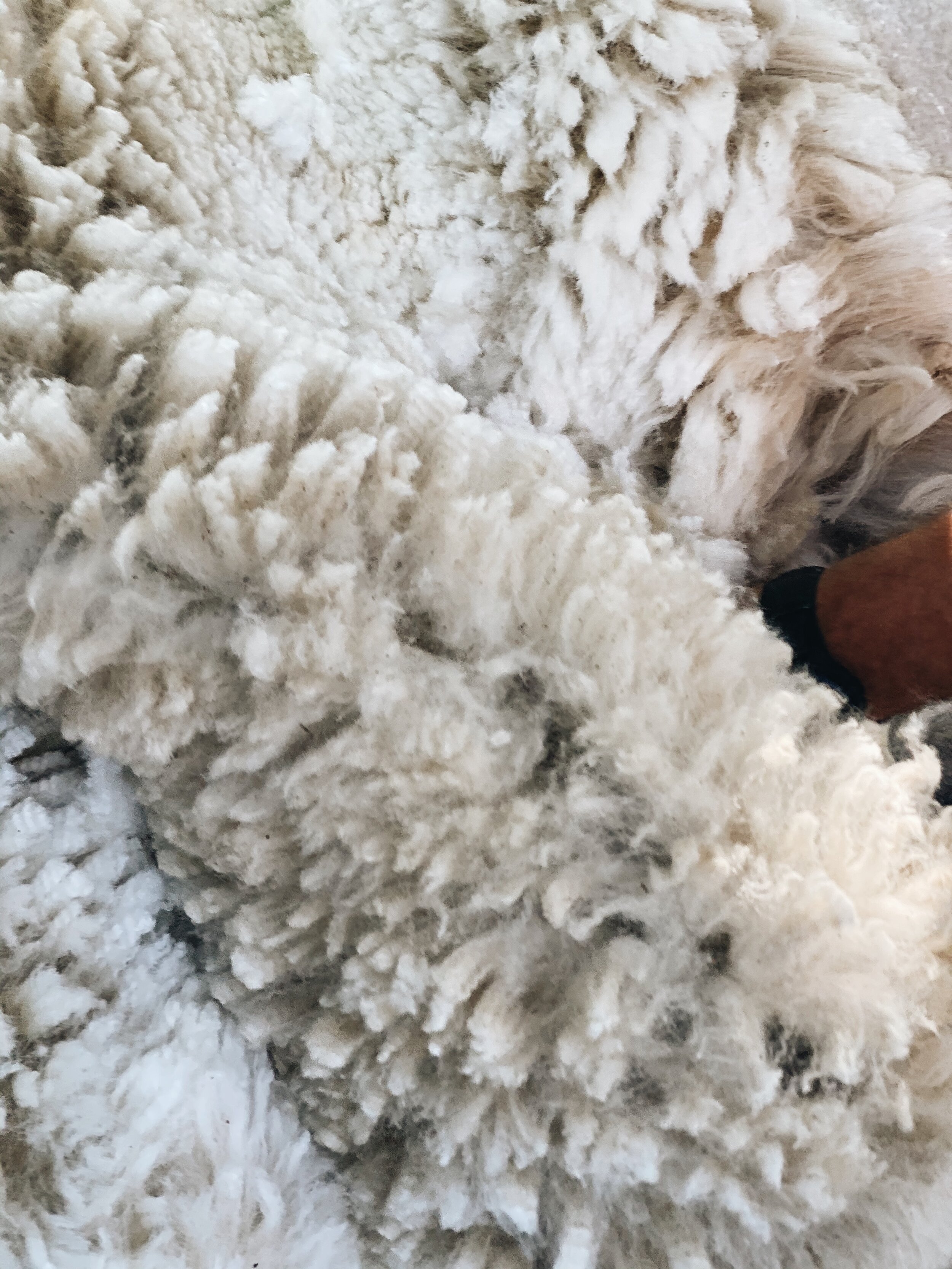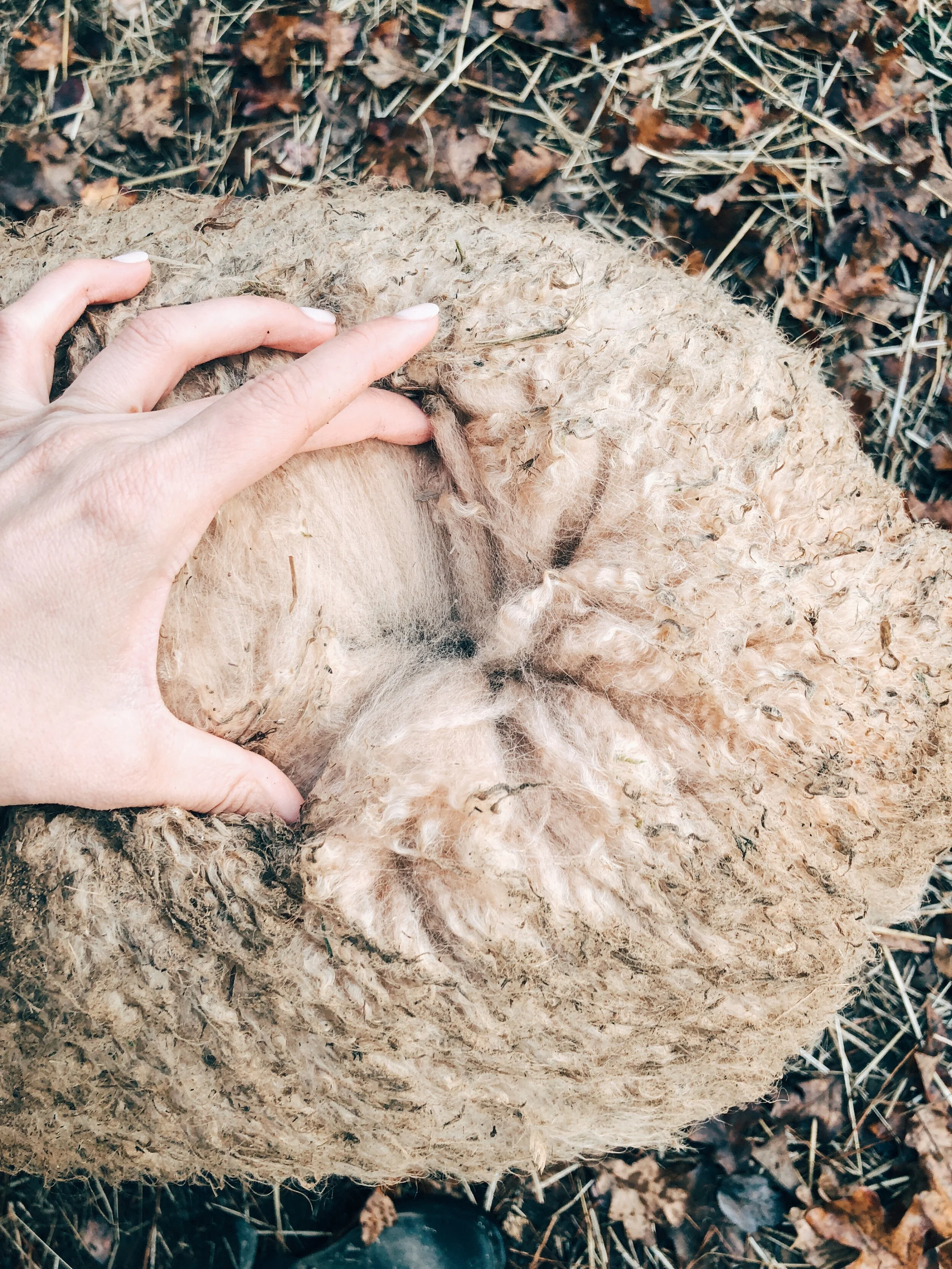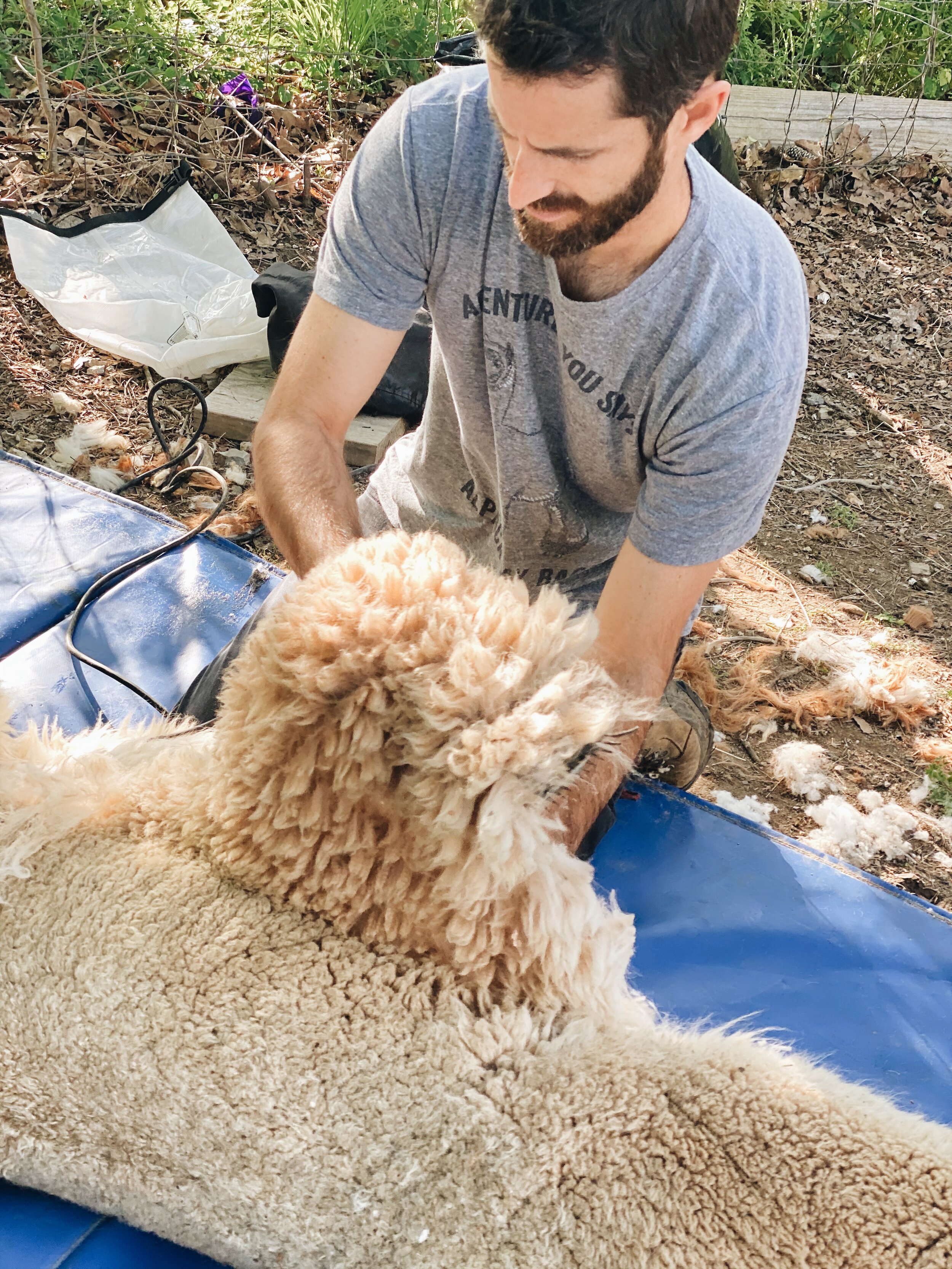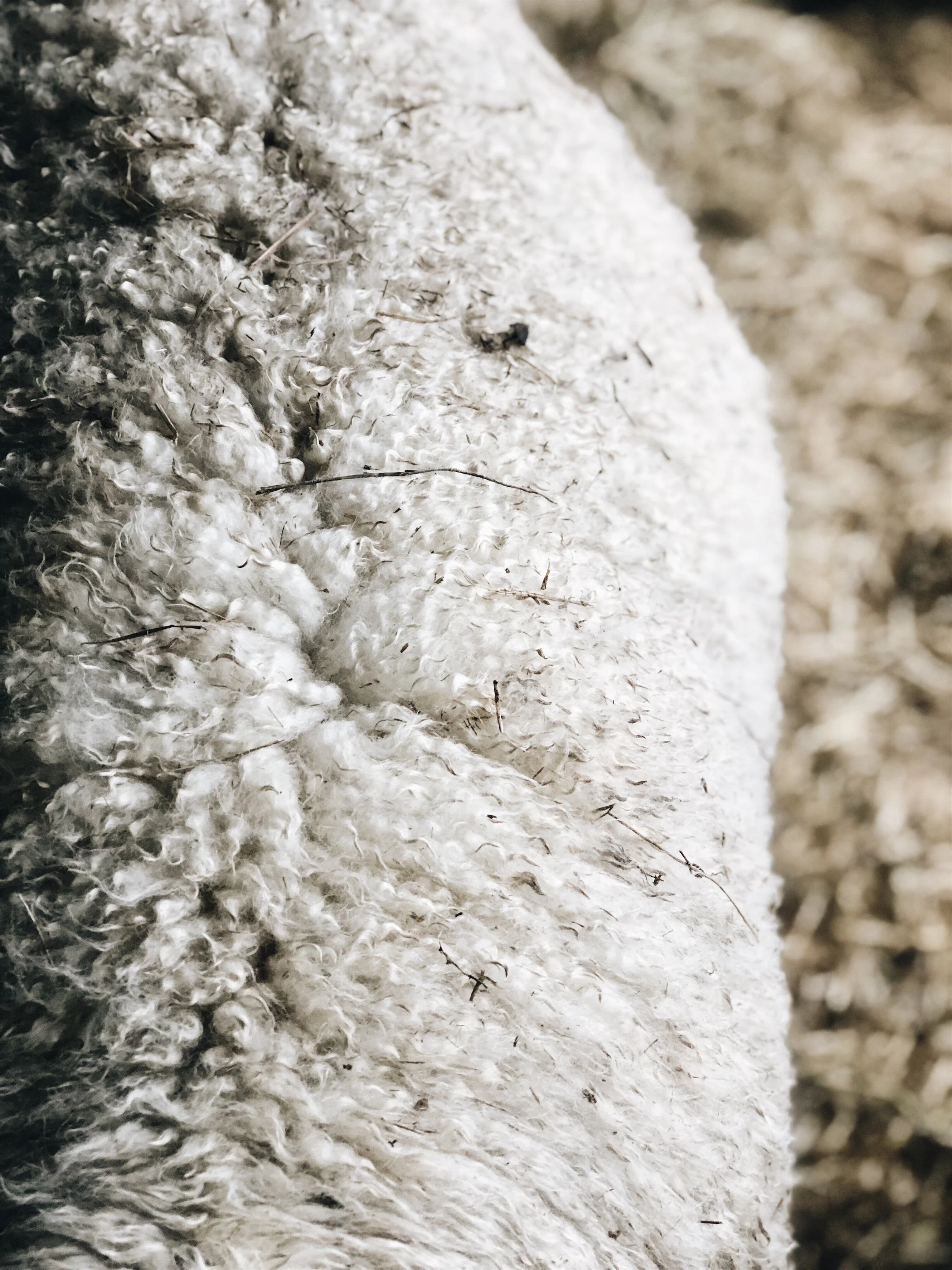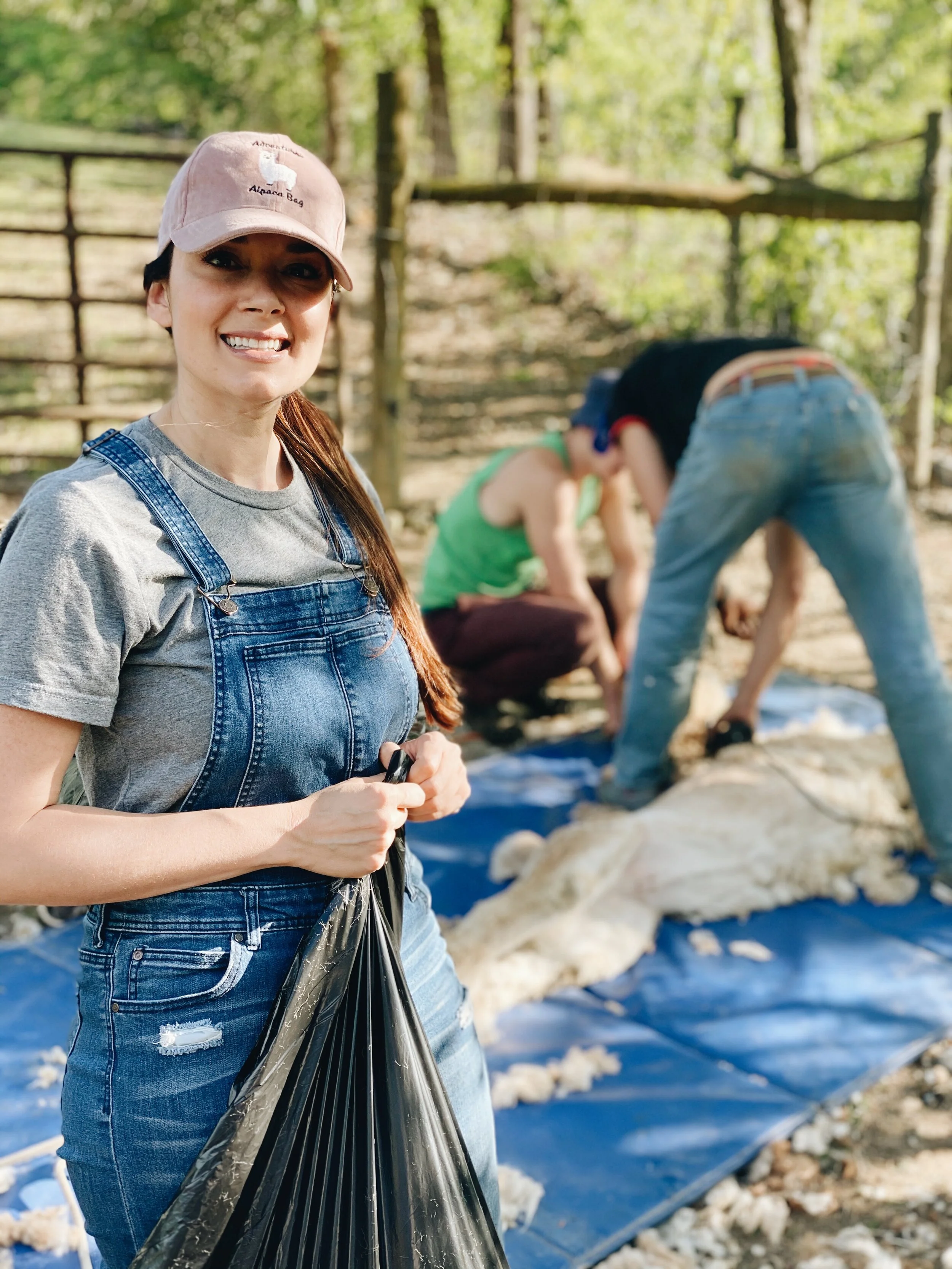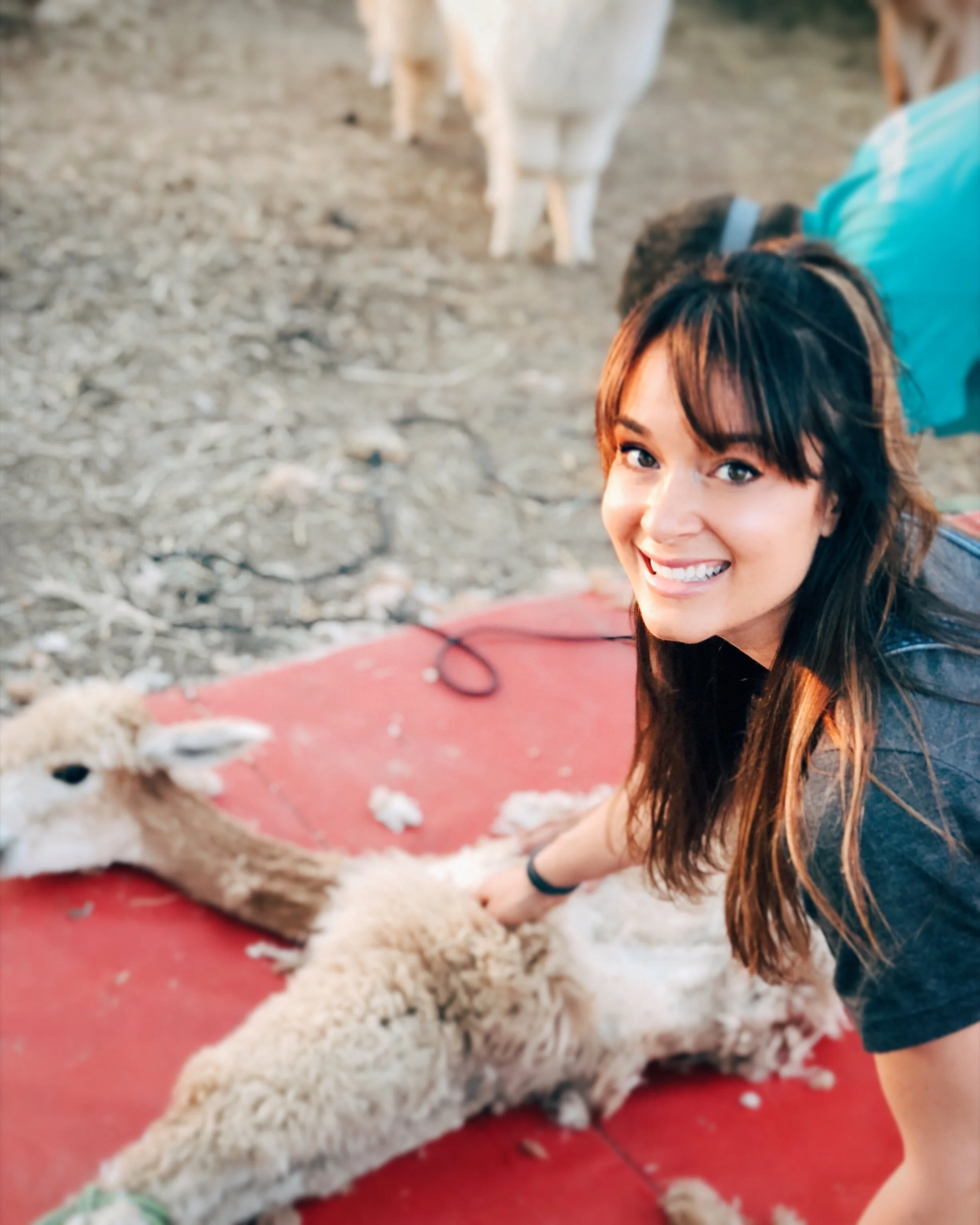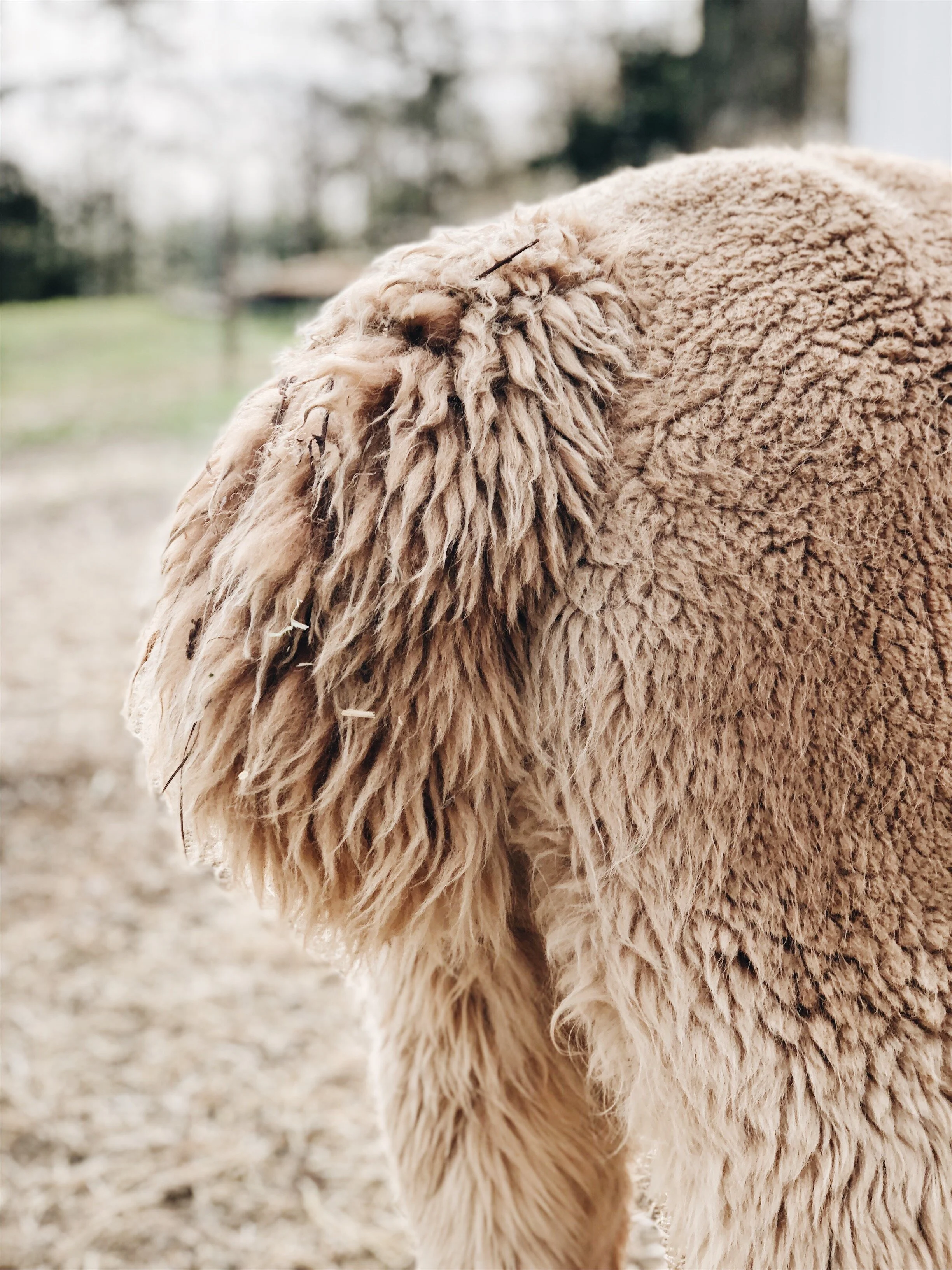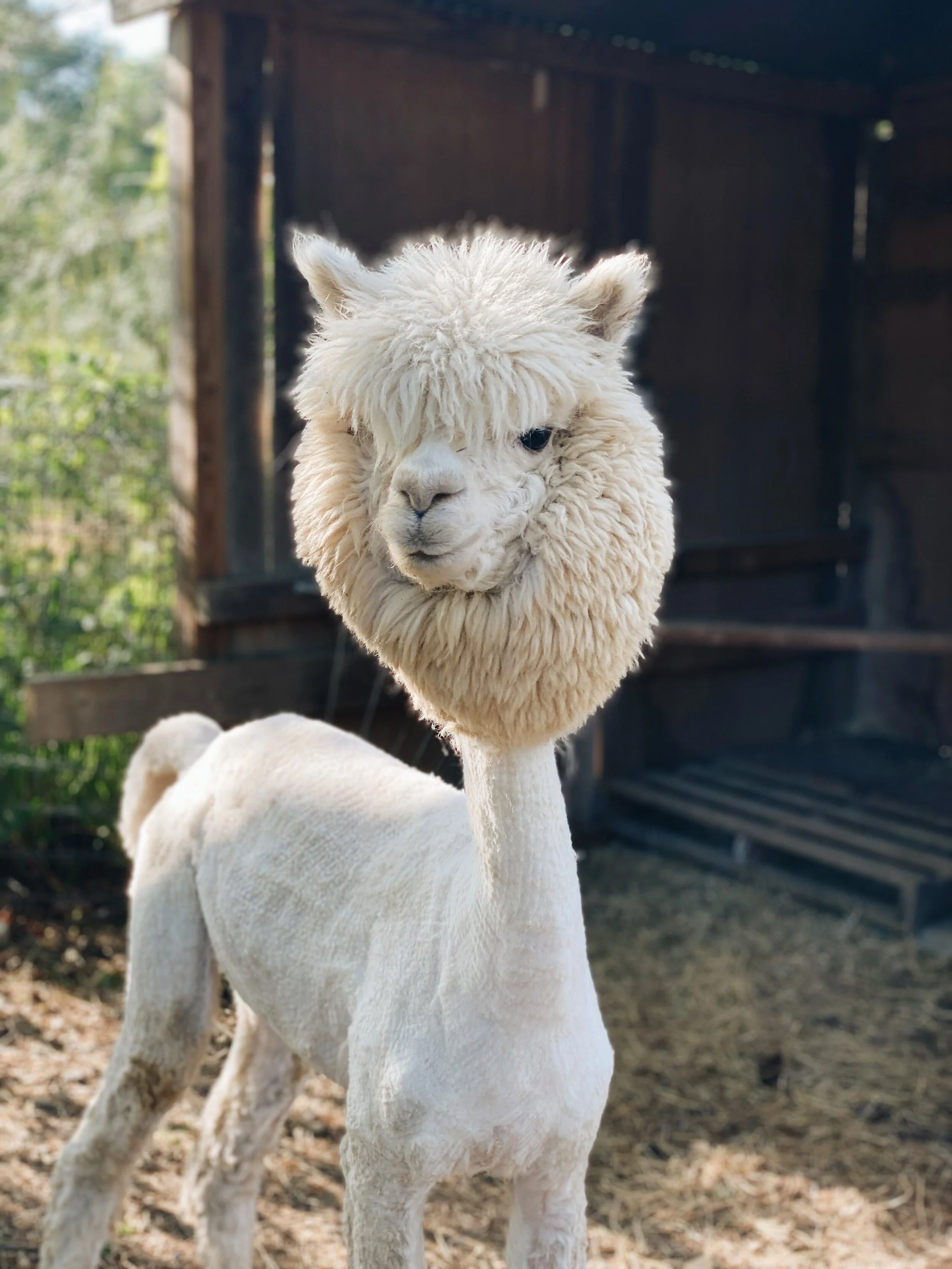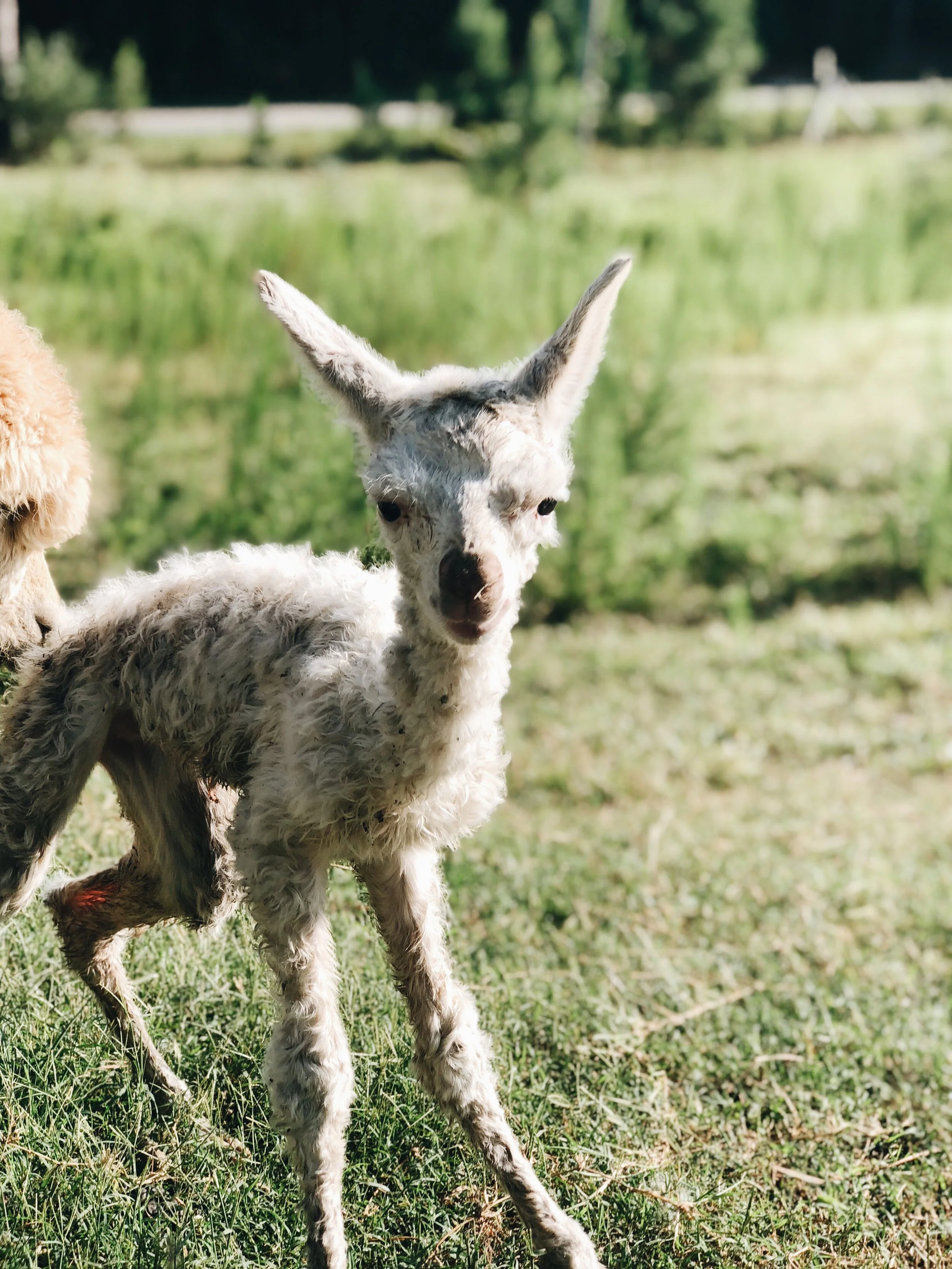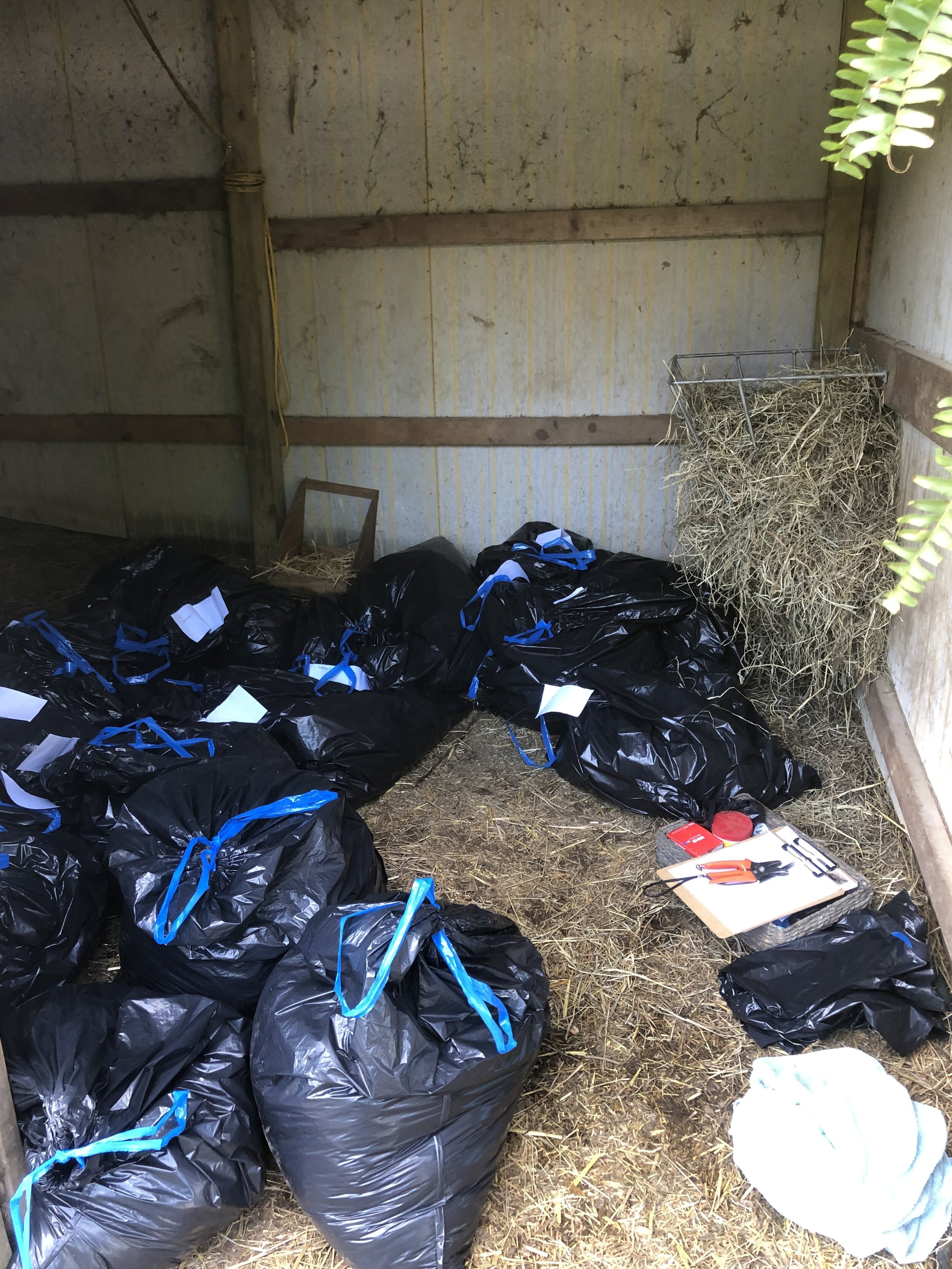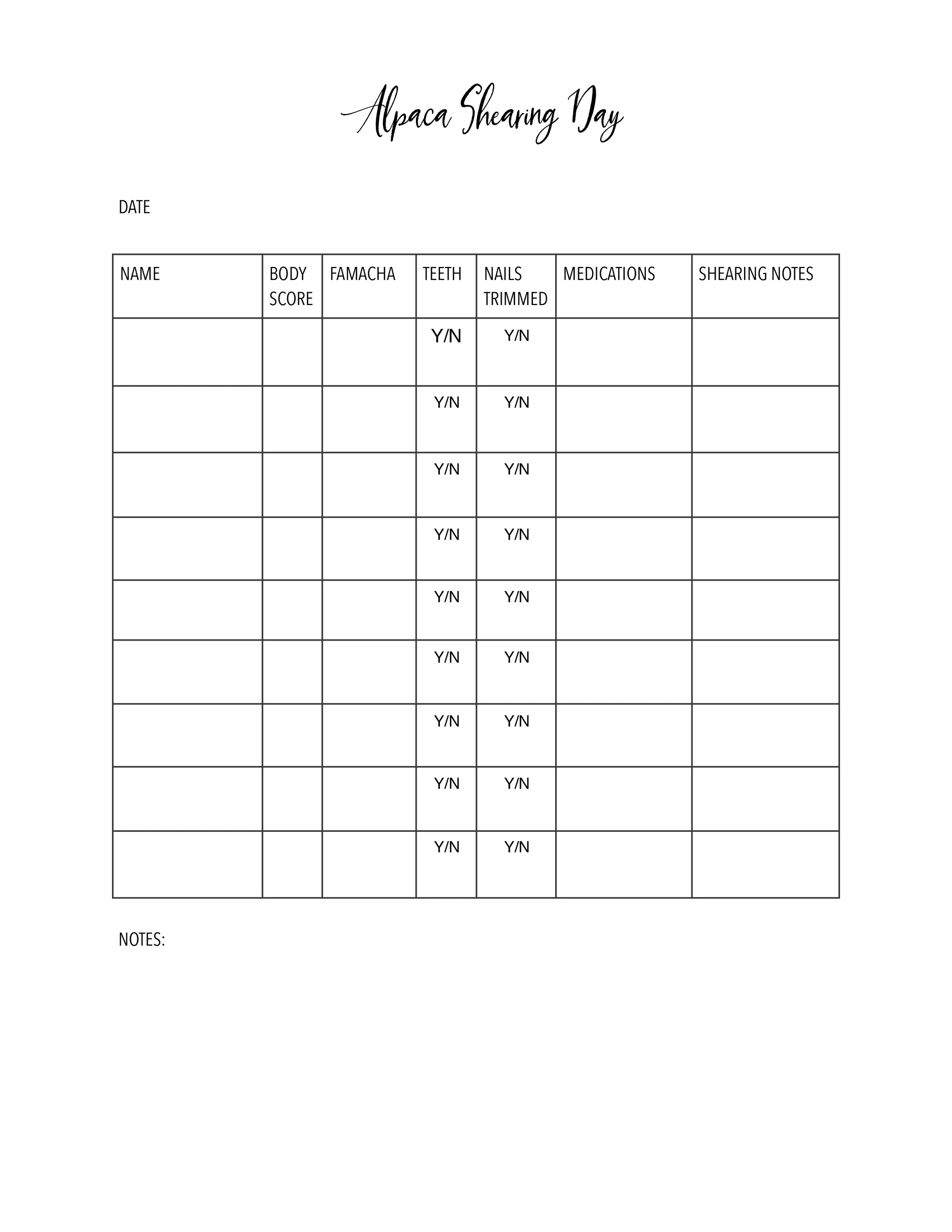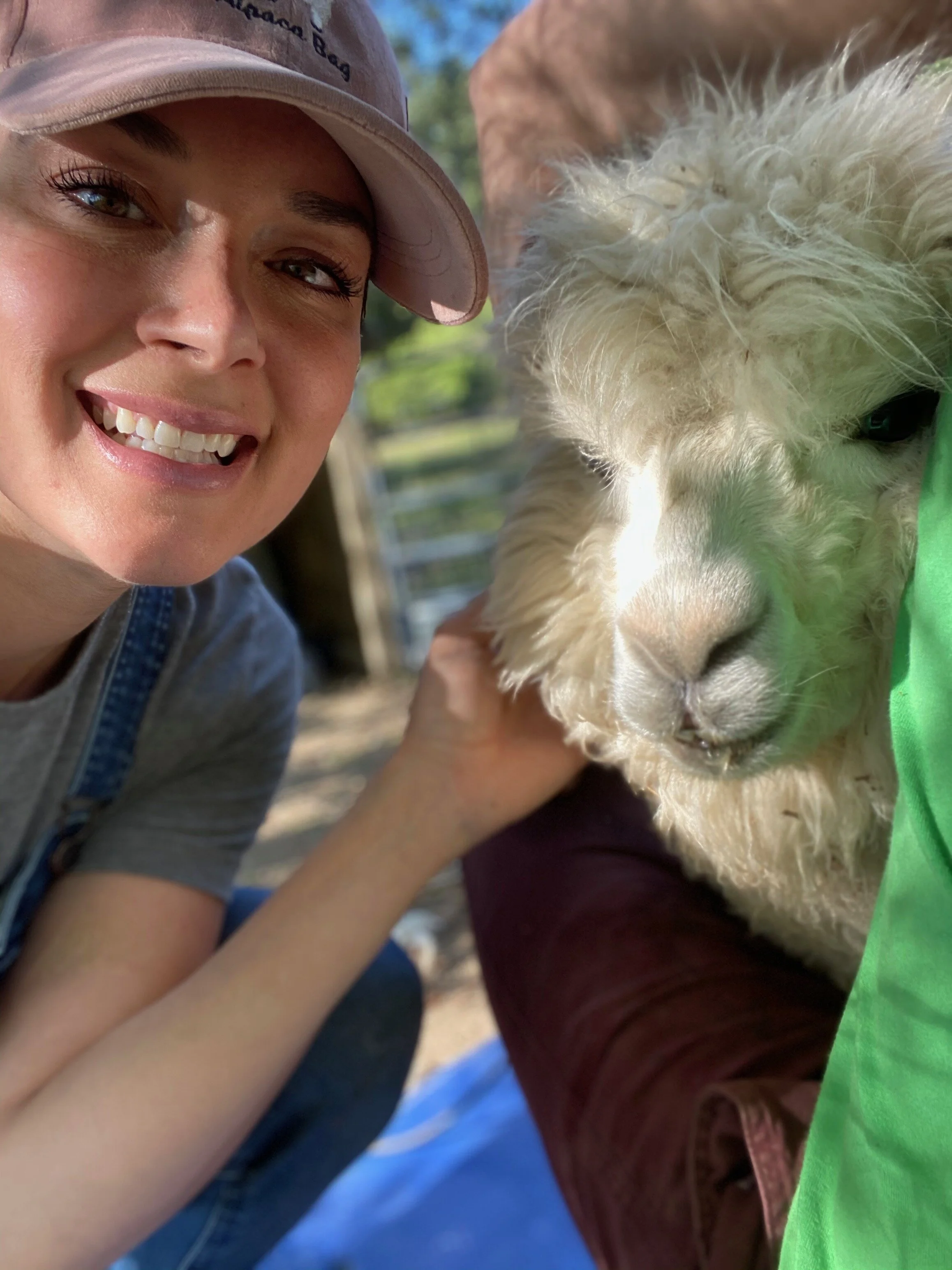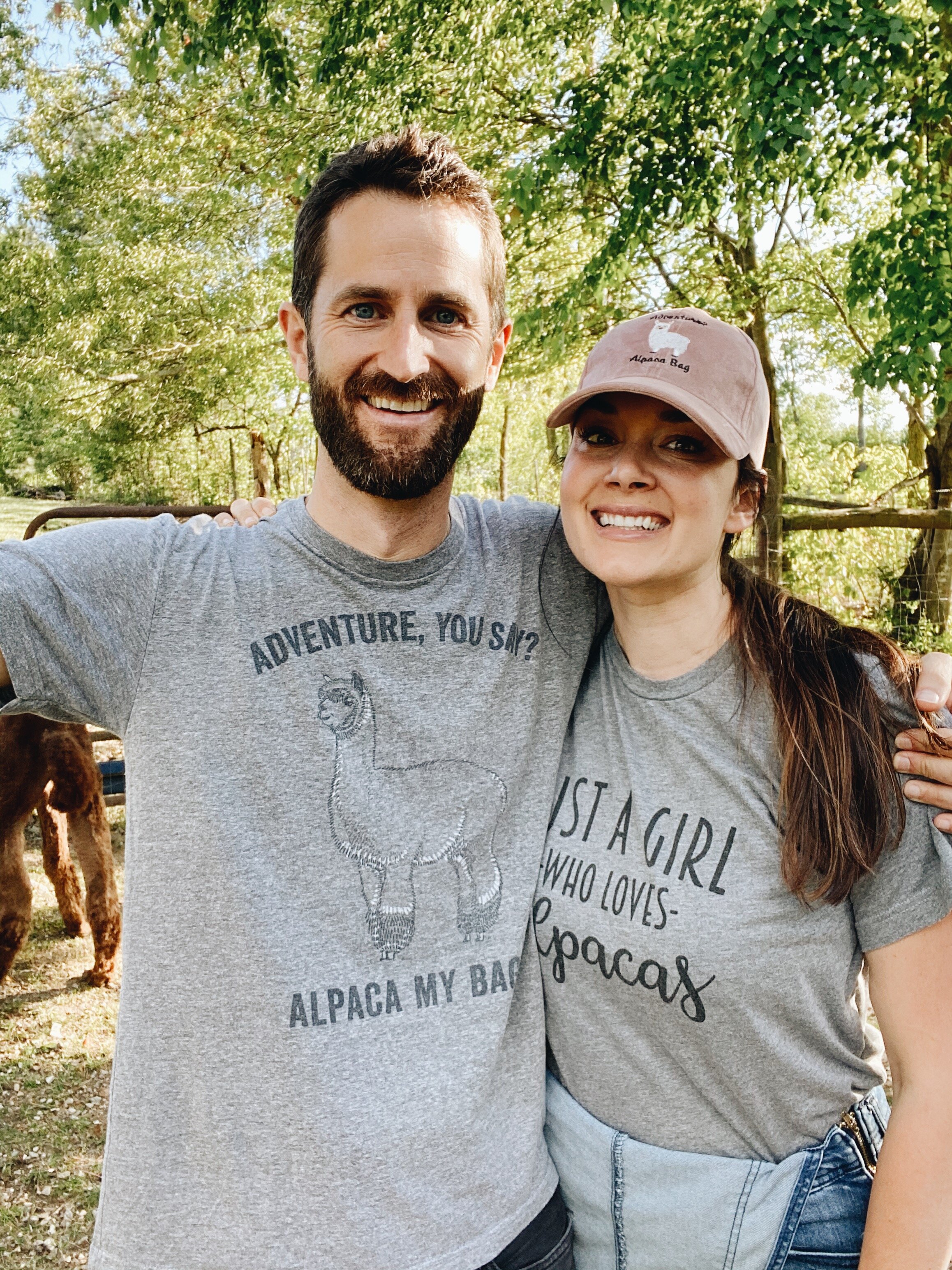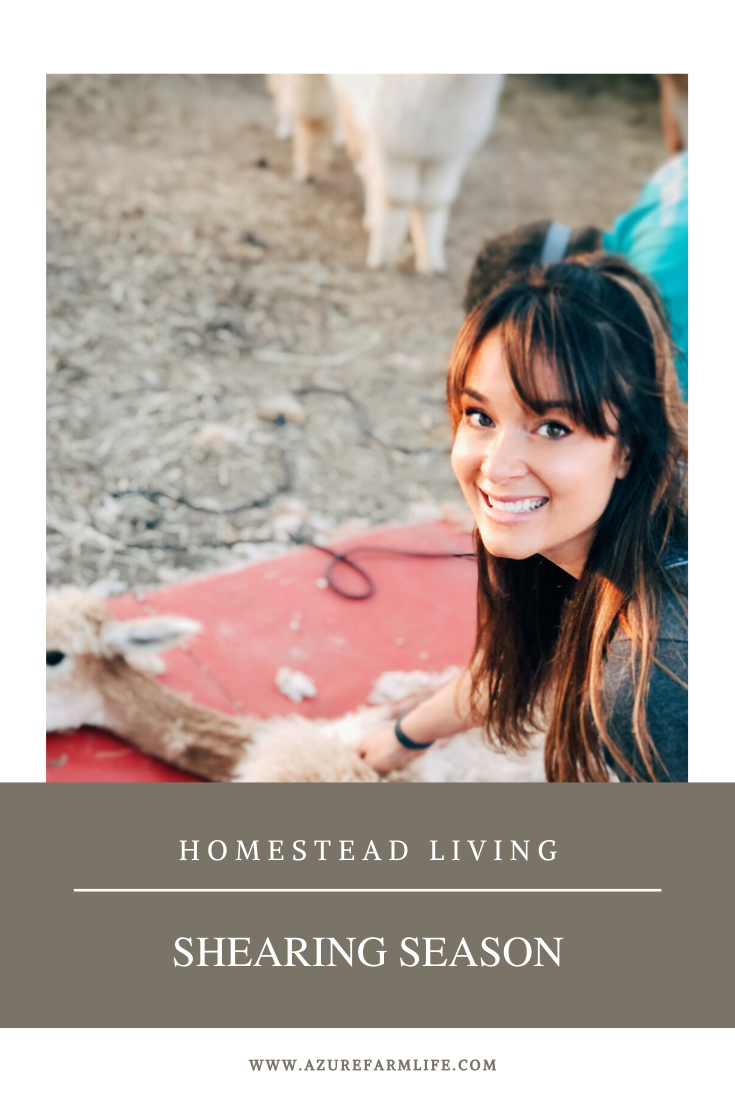Shearing Season
Shearing Season on the Homestead
Shearing season on the homestead! Here is some information I hope you find helpful when it comes to shearing your animals this next season. Here at Azure Farm we shear our alpacas. Read on to see why we shear our animals and all the information behind it plus helpful tips.
My blog post is focused on alpacas but a lot of the tips and things can be applied when shearing any animal! Read each section to know what you’ll need and see helpful tips and thoughts along the way.
Things this blogpost will cover:
Why shear an alpaca
Who should shear your alpaca/farm animal
Where should you shear your alpaca/farm animal
Ways to shear an alpaca
What time of year is best for shearing and when to schedule
Supplies needed for shearing
Things I’ve learned from our shearing experiences. A few words of wisdom from me.
I am NO expert I am only sharing what I’ve learned. It’s always prudent do to your own research in these things beforehand.
WHY SHEAR AN ALPACA?
One of my favorite things about an alpaca is that it’s not raised for it’s meat. An alpaca is never killed or processed as food. They are simply sheared for their fiber! It is ethical and cruelty free which I love! Their heavy fiber coats prove to be very hot come summer. They can suffer from heat stroke or worse. Alpacas do not shed their coats so they need to be sheared to stay cool. Even if you are not going to utilize their fiber they still need to be sheared. For that reason in the spring we shear our alpacas.
Other animals that might require shearing include
Sheep
Llama
Alpaca
Goat
Camels
Yaks
Angora Rabbits
WHO SHOULD SHEAR YOUR ANIMAL?
It is best for an alpaca ( or any animal that needs shearing ) to be sheared by someone who has been trained and certified with experience. Shearing can be very stressful on the animals so knowing how to do it quickly and safely is very important. If you want to shear your own alpacas make sure you have been trained and feel confident. We have not really done so yet. Jared has helped but we hire someone each year to come do it. Of course it is an expense and if we did it ourselves it could be cheaper, but due to multiple circumstances we have not done it and I have felt good about having someone who knows what they are doing come. There are different companies nationwide that provide shearing for your alpacas. I would say research in your area who people use and get on their schedule for the next year.
Something to keep in mind also is if you’re going to utilize the fiber you need to shear properly so the blanket is kept intact and your fiber is not compromised. If you do too short of cuts the fiber cannot be spun or used thus making it of no value. So it is prudent to ensure you hire someone who is skilled or guarantee you are trained before you begin the process. If you do not utilize your fiber then it could be ok to shear in an untraditional or not as clean way since you are not worried about the fiber. Always however keep your safety and the safety of the animal the first priority.
Don’t be afraid to speak up and give your opinion when it comes to shearing. Your animals are very special to you and you want them to be safe. If someone is shearing them and going too fast and risks cutting the animal or does cut the animal tell them to stop and slow down.
IMPORTANT TIP- The shearers should switch blades in between each animal. The blades get very HOT and can burn the animal if used consecutively. Make sure they are alternating between each to ensure they are still sharp and cool
The blades also need to be disinfected and kept clean. If any of your animals are sick or have a skin does ease take special note and let the sheared now. Keeping things clean and sanitary is very important.
Jared shearing alpakita
WHERE TO SHEAR YOUR ANIMAL
When it comes to shearing the ideal place is a clean dry spot. Im going to go right ahead and say that we have sheared outside in the open air every year, although our barn would probably be best. Logistically with some of our animals it just hasn’t worked out.
It really depends on what you’re doing with the fiber. If you are not keeping or utilizing your fiber and just need to get if off then whether, debris, leaves, or things that get caught in it won’t matter. However, if you will be utilizing your fiber you need to ensure it stays clean. For this reason You want a dry, clean place. It’s always good to pick a shaded place so the animals do not become overheated.
We have sheared outside and kept things pretty tidy so it can definitely be done! If you shear your animal laying down and restrained you will need to have sturdy posts to tie to. If you’ve got male and females it’s best to keep them separated and shear in two separate areas. You can use panels to divide the areas and even create a small temporary pen. Alpacas do not typically challenge fences so once enclosed they shouldn’t jump. Just keep these things in mind when choosing a location.
IMPORTANT TIP- You will need electricity so ensure wherever you shear you have access to power. This means having extension cords ready if needed, the power on in that area etc.
we have usually sheared outside and it’s been ok.
WAYS TO SHEAR AN ALPACA
On the ground
Laying on a table.
Standing
SHEARING ON THE GROUND
The front and back feet are tied by a rope preventing them from moving around or standing. At first I thought this was so awful and traumatizing but then I realized it’s for the safety of the animal. When they are tied it prevents them from moving and thus accidentally being cut with the shears. It’s then easy to turn them and rotate them appropriately. The head is held securely at all times. Ensure 2 people life the alpaca and gently place it on its side on the ground. Then you can tether their legs.
SHEARING ON A TABLE
An alpaca is usually secured to the table while standing and then turned on their side. They are sheared and rotated and then turned vertically again when done so they can stand up. The head is held securely at all times.
STANDING
Standing is shown to cause the least amount of stress to the animal. It is however the hardest to do and not everyone can do it properly. If the animal is moving and scared it could seriously injure itself, the shearer, or those helping out. Ensure you are properly trained before trying this method. No matter what method you use make sure you have the right equipment, amount of help, and the animals are kept as safe and stress-free as possible.
IMPORTANT TIP- If your animals have any health conditions, skin issue, or mobility issues be sure to let your shearers know prior to starting. Some of my alpacas have had weak legs due to meningeal worm and the shearers have had to take special precautions when shearing. Also be especially careful if the alpaca is pregnant. All of these things might determine which position you shear your animal in.
this is from our first shearing back in 2018
WHAT TIME OF YEAR IS BEST FOR SHEARING ?
Animals are usually shorn during spring! The reason being you do it before it gets to summer heat so they can stay cool. Typically an alpaca is sheared once a year before the end of July depending on where you live. You don’t want to do it when it’s still late winter because they could get cold without all their fluffy fiber! For us in Georgia it’s usually mid April when shearing occurs. If you have pregnant mama’s keep in mind that shearing can be stressful and it’s best to not shear if pregnant within 30-60 days from expected delivery date. This is not always realistic but as a general guideline.
If you shear your animal and it gets cooler for whatever reason make sure you have plenty of straw and hay for them in their barn/shelter for them to stay warm, happy, and lay on.
Although we shear in late April I have always put my name down on the schedule early. We go ahead and schedule way out in January. We don’t know a confirmed date but we do manage to get on the list even if we don’t know a date. Don’t delay in getting your animal scheduled. Summer comes and you want to get things done prior.
VERY IMPORTANT TIP-
You want to ensure your alpacas ( or any animal you are shearing) are dry prior to shearing. If they are wet the shears can get stuck and it can be bad and painful for the animals. If the weather predicts rain, if possible pen your animals the night before so they can be nice and dry before the rain comes.
THOUGHTS ON CRIA SHEARING
Baby animals are usually born in the spring aroundt the same time shearing season comes. When a baby apaca is born there is amniotic fluid that accumulates on their fiber.The tips of their fiber ( outermost layer) until sheared are somewhat sticky with amniotic fluid and they are much more likely to have leaves, grass, hay, etc stuck to then. We have always waited till the following spring to shear ours as I have feared they would be too cold . Some people wait, some go ahead. It depends on how old they are too! If you choose to shear them just know they don't need to be sheared all the way! You can just do their tips!
IMPORTANT TIP- it’s important to not wash of their amniotic fluid completely. This helps the momma smell them and let’s her know the baby is hers. It helps with bonding. If the baby is washed off completely the mom might reject the baby and not recognize it. We only towel dry the cries when born.
SUPPLIES NEEDED
If you are new to this whole world just as I was and still am, it’s good to be prepared and have all the things you might need on hand. These are the essentials I have needed over the years. I just put everything into a big crate or basket and carry it down to where we are shearing.
Large trash bags with drawstring ( at least 2 per annuals) If you have 5 alpacas that’s 10 bags total
Have a few old towels you don’t mind getting dirty
Broom and dustpan and /blower.
Betadine
Old socks
Hearth record charts + clipboard plus pen attached.
Clippers ( if you’re doing it yourself)
Shearing Mat ( if you’re doing it yourself)
Restraints ( if you’re doing it yourself)
Have any medications, de-wormer, etc on hand to give if you need them.
Nail Clippers
LARGE TRASH BAGS-these will be to collect your fiber in! If you are collecting all you might even need 3 bags per animal
OLD TOWELS- Sometimes with all the excitement the animals will pee and that can get on their fiber. I place a town just under them to ensure anything is caught by the towel in the process
BROOM/DUSTPAN/BLOWER- After shearing each animal you want to ensure the environment is clean before the next one. A quick sweep does the trick. At the end you can use a blower to move any fiber thats on the ground
BETADINE- Sometimes the animal does get cut. In that case I put a little butadiene on the cut. I’ve only had to do this once or twice to minor cuts but it’s nice to have handy.
OLD SOCKS- Alpacas don’t normally spit at humans, only each other. However they can get a bit feisty when it comes time to shear them. You can place an old sock over their mouth so they can’t spit at you. Make sure the sock is breathable though!
HEALTH RECORDS- There’s more details on that in the next section. Have them handy so you can take notes. Make sure a pen is attached so you don’t have to go searching everywhere.
CLIPPERS- if you are doing the shearing make sure you have clippers that are sharp and ready to go. You should change them out in between animal so they don’t get too hot, so make sure you have all the proper equipments.
SHEARING MAT OR TABLE- If someone is coming they will usually bring their own, but make sure you have what you need.
RESTRAINTS- Alpacas have to be restrained most of the time to shear so make sure you have the appropriate kind and sturdy posts to secure to.
MEDICTIONS- Yost want to stress the animal more so I wouldn’t give much or necessarily recommend it but if there’s something you need to give you can do it while the animal is being sheared.
NAIL CLIPPERS- Clip their nails while they are being sheared. This is a great way to get a good look at their feet as well.
IMPORTANT TIP- Have your bags labeled with the alpacas name or number PRIOR to shearing. That way you can just grab the bag, place the fiber in it and move on. If you have to label everything there it will take you FOREVER! Trust me. Just bring their names prior and tape them to the bags. IT makes sorting fiber much easier later.
BEFORE SHEARING
AFTER SHEARING
HEALTHCARE RECORD
Shearing time is one of the best times to get a good look at your animal and evaluate their health. I normally don’t look at the alpacas all over except for their monthly checks. When sheared you can really look at their skin, eye color, hooves, teeth, etc. For this reason I have a health record for each animal and I take notes. If you have just a few animals you can do the more detailed health record, and if you have many animals you can use the quick checklist one!
I try to be diligent about keeping records. If not, I get everyone mixed up and can’t remember who got treatment for what etc.
When shearing season comes for alpacas the males can usually get their teeth trimmed. They have fighting teeth in the back which are sharper and pointier. Those can be drilled down a bit so they can’t fight and bite each other.
Hooves should be trimmed and it’s easy to do them when shearing.
DRAG IMAGE BELOW OFF SCREN OR SAVE TO PRINT AND USE!
HELPFUL TIPS
Eat beforehand. Not too close before but make sure you are well fed and don’t have to pee. You’d be surprised at how much hard work shearing can be!
Be prepared for the animals to make all sorts of terrible sounds. Remind yourself they are safe and they’re ok. Shearing is necessary, they are not dying and pretty soon it will be over. Our third year I didn’t even flinch and honestly I think the alpacas were fine!
I If possible shear animals from lightest first to darkest last. This will prevent cross contamination of their fibers and you don’t get a bunch of fiber of the wrong color in your fiber bags.
it’s best to not feed them the day of. They get stressed and it can affect their rumen. Hay is ok but no feed after midnight the evening prior.
If it’s super hot try to shear in the shade or have fans. This will really help the animal.
Have water available for everyone! Animals and those involved in the shearing
Always have an extra person there to help. It makes a world of difference.
its not a time however to have many people over to watch etc. Keep dogs, children, or any other stress factor away so the animal is as calm as possible.
Make sure when you’re done that all fiber is picked up or blown away. Sometimes the chia or little ones want to eat the fiber and it can cause a big issue with their digestion so be diligent about picking up.
Be sure to let the shearers know if you want any fancy hair cuts prior to starting. These can take more time and skill so ensure that is something they can do. It’s best for the animal to shear all of their fiber. Leaving some around their face and top of their heads is ok though and super cute!
HAVE FUN! It goes by very FAST so enjoy it. It usually takes an experienced sheared about 8-10 min per animal so not long at all! It can actually be fun and educational so enjoy it
Opal was not too thrilled.
2018
2019
2020
I continue to learn each and every time. I am just now getting into what to really do with our fiber and utilize it. Last year with Ava being born it was a bit crazy and we didn’t do much. The year before it was just learning! So many things but all of it fun and educational.
PIN FOR LATER
I hope this has been helpful to you! Let me know if you’ve got questions! Always see what we are up to on our instagram @azurefarm and be sure to check out these other blog posts on animals on the homestead with information on our experiences!
Much Love,
Annette


